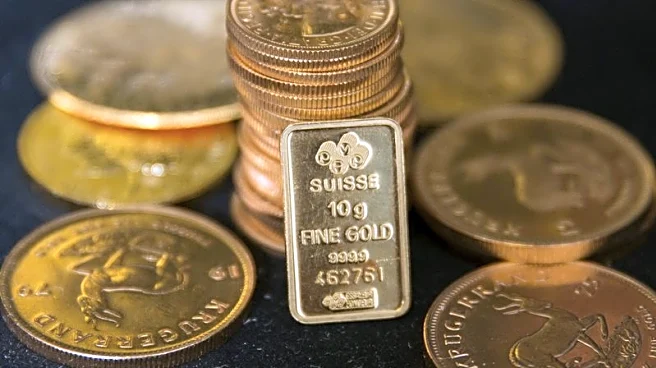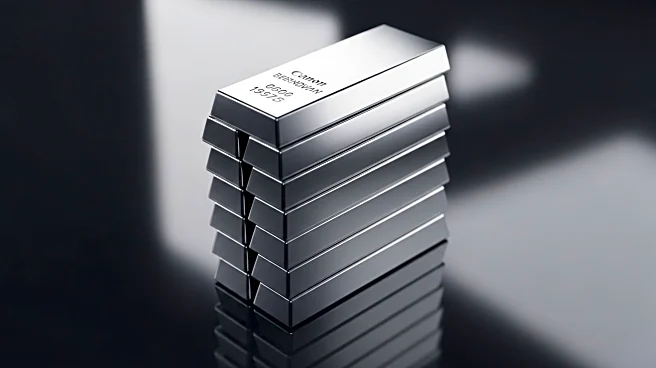What's Happening?
Goldman Sachs has increased its gold price forecast for December 2026 to $4,900 per ounce, up from the previous estimate of $4,300. This adjustment is attributed to strong inflows into Western exchange-traded funds (ETFs) and anticipated central bank purchases. Spot gold is currently trading around $3,960 per ounce, having reached a high of $3,977.19 earlier. The price of gold has surged by 51% this year, driven by central bank buying, increased demand for gold-backed ETFs, a weaker dollar, and heightened interest from retail investors seeking a hedge against geopolitical and trade tensions. Goldman Sachs projects that central bank purchases will average 80 metric tons in 2025 and 70 tons in 2026, with emerging market central banks continuing to diversify their reserves into gold. Western ETF holdings are expected to rise as the U.S. Federal Reserve is anticipated to lower the funds rate by 100 basis points by mid-2026.
Why It's Important?
Goldman Sachs' revised gold price forecast reflects broader economic trends and investor sentiment. The anticipated increase in gold prices suggests growing demand for safe-haven assets amid geopolitical uncertainties and potential economic volatility. Central banks' continued diversification into gold indicates a strategic shift in reserve management, which could influence global financial markets. The forecast also highlights the role of ETFs in driving gold demand, as investors seek to protect their portfolios against inflation and currency fluctuations. The expected reduction in U.S. interest rates may further boost gold prices, as lower rates typically enhance the appeal of non-yielding assets like gold.
What's Next?
As central banks and investors continue to increase their gold holdings, the market may experience further price fluctuations. The U.S. Federal Reserve's monetary policy decisions will be closely watched, as changes in interest rates could impact gold demand and prices. Investors may also monitor geopolitical developments and trade tensions, which could influence market sentiment and drive further interest in gold as a safe-haven asset. The dynamics of ETF inflows and central bank purchases will be key factors in shaping the gold market's trajectory.
Beyond the Headlines
The rising gold prices underscore the broader economic challenges facing global markets, including inflationary pressures and currency instability. As investors seek to mitigate risks, the demand for gold may reflect deeper concerns about the sustainability of current economic policies and the potential for future financial disruptions. The strategic diversification by central banks into gold also raises questions about the long-term stability of fiat currencies and the role of gold in global monetary systems.











